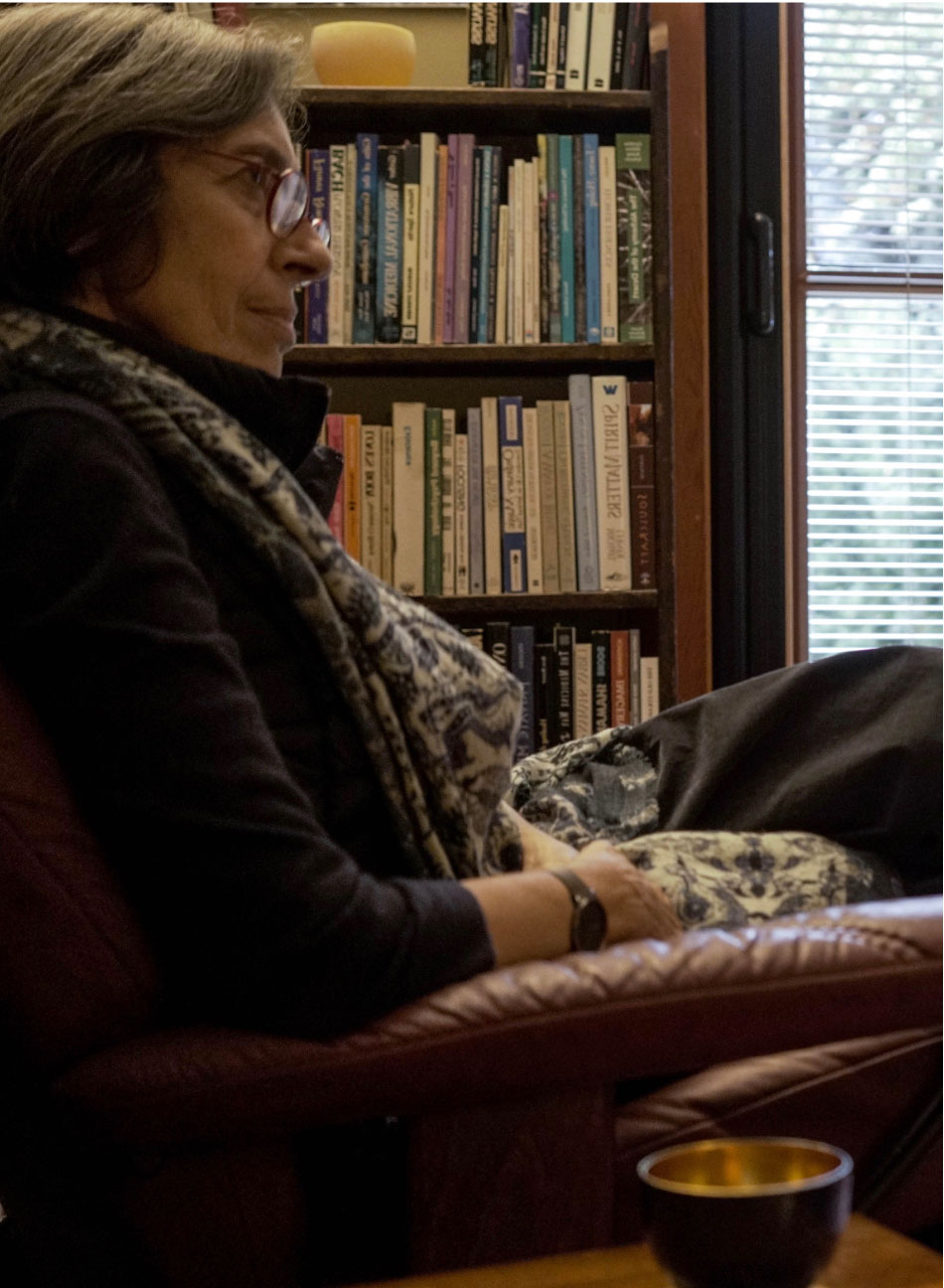Jungian Analysis

By “analytical” I mean a procedure
that takes account of the existence of the unconscious.
CG Jung
JUNGIAN ANALYSIS is dedicated to the evolution of consciousness. Consciousness grows when we shine its light onto the unknown terrain that Jung called the unconscious. He was referring to the larger part of our psyche that houses instincts and primordial images: a virtual company of strangers.
The unconscious expresses itself by whatever means are at hand – dream, creative process, emotion, the body, patterns of everyday life, memory, spontaneous association, interpersonal relationships. If we do not listen, we may underestimate its influence.
Analysis gives voice to the unconscious, exploring its images and its impact. It is a dialogue that both catalyses and mirrors the inner dynamics of our psyche. We shine a light into its recesses and invite its neglected forms out of hiding.
We can think of analysis as a lens that opens us to patterns and questions that ordinary conversation does not. Unlike some other therapies, it does not promise a quick fix. Analysts do not pathologize complaints, do not apply prescribed techniques, and do not pursue a set outcome – beyond a general movement towards wholeness. The rhythm of analysis and its agenda belong to the soul alone.
The archaic image of the soul is likened to a treasure
hidden in the midst of the body.
Mircea Eliade

Concepts of soul and psyche are hard to define. Jung writes cryptically: “When I say Psyche I mean something unknown to which I give the name ‘Psyche’.” I use psyche to mean the living interface between ourselves and all aspects of reality, from the most minute and concrete to the most vast and ethereal. It is inseparable from us; we are embedded in it.
In analytic terms, soul is an elusive quality that permeates and encapsulates all of who we are. It is our inner personality. Bringing discarded or undiscovered parts of ourselves to light through the analytic process makes soul more palpable, more vivid, more available. As the soul’s journey to wholeness unfolds, we are enlivened, and so is the world around us.
We track the soul through dream, creative process, patterns of everyday life, memory, spontaneous association, personal interaction: whatever shows up in a session. Over time our dialogue mirrors an internal pattern of encounter, inquiry and assimilation, revealing the dynamics of psyche.
. . . the constant flow of life again and again demands fresh adaptation
CG Jung
I think of a problem as a signal of a need for change. It could be a change of attitude, or something more concrete. In my work I take outer world difficulties as indications that an inner life needs tending. I believe that we are all called – whether by illness, changing or challenging life circumstances, discontent, yearning or simple curiosity – to live an enlarged version of ourselves.
The soul comes to life in the turn from the literal into the imaginal.
James Hillman
Psyche speaks to us in images, often riddling and multivalent, fleshing out the bytes of data which form the currency of ordinary, rational discourse. Becoming fluent in the syntax of symbol and metaphor proves a remarkable asset in making meaning of our tangled lives.
In analysis we enlist the imagination as our chief instrument. From its images we build a vocabulary that is personal, one that animates experience in a delightful and helpful way. Imagination is the language in which inner communication takes place.
. . . my work is not concerned with the treatment of neuroses
but rather with the approach to the numinous.
CG Jung
In analysis we do not focus so much on what is wrong as mine the psyche for its untapped potentials. When suffering shows up, we re-purpose it, using it as raw material in the overall renewal of personality. Together in the analytical process we generate a field plentiful with images and feelings where, deo concedente or spirit willing, something dormant awakens.
Through shared exploration, both challenging and collaborative, a new experience of ourselves is possible. This can feel like a coming home, with an expanded sense of confidence in the substance, essence and potential of our being. Values and orientation are likely to shift. We may adopt a different attitude towards what lives in the eternal core of our being.
My path is not thy path, yet together we walk. . .
Kahlil Gibran
During a time of transition, it is wise to have a guide, one who has travelled before. For, paradoxically, though the journey to our self is ours alone, it can go better with a companion. An ‘other’ person often sees what we alone do not, lends confidence or stability when we falter. And besides, it’s more fun.
Analysis is a deep encounter
that calls into presence the invisible
or undiscovered parts of both personalities.
Alison Vida
Salt Spring Island, BC Canada
alison@alisonvida.com
